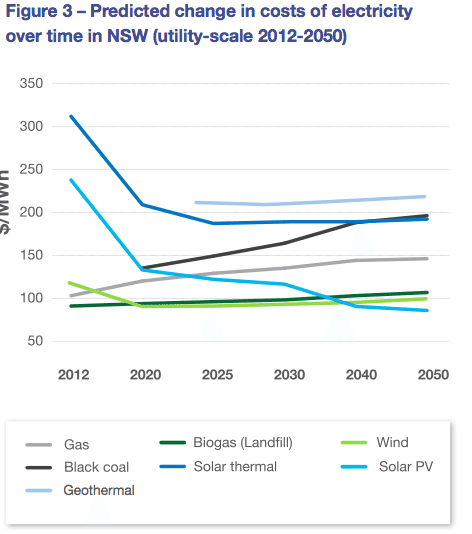NSW has restated its support for the 20 per cent renewable energy target, and unveiled a draft of its own Renewable Energy Action Plan in an effort to ensure that the state gets its share of an estimated $36 billion in clean energy investment.
The plan was unveiled at the University of NSW by Energy Minister Chris Hartcher and Parliamentary Secretary for Renewable Energy Rob Stokes and outlines 28 actions to encourage investment.
Hartcher said a strong renewable energy sector was vital to supporting employment and growing the state’s economy, and it wanted to attract more projects such as the 160MW solar PV plant being built by AGL Energy and First Solar at Broken Hill and Nyngan.
The government estimates that 6,000 jobs will be created out to 2020 from renewable energy investments. The state is also keen on getting its share of the $10 billion to be invested by the Clean Energy Finance Corporation, which is to be based in Sydney, and will support the development of emerging technologies.
However, Hartcher also kept to the state’s mantra of “no extra costs to consumers” and said “only the best value” for money solutions will be adopted. “We have heard loud and clear that people are fed up with soaring electricity prices which is why consumers have been front of mind in the development of this Plan.”
But he also said the government will also fast track its energy efficiency plan, which it estimates can save 16,000GWh of electricity by 2020 and deliver $2.8 billion in avoided electricity costs.
The government says it wants to take practical steps such as improving network connections, streamlining planning processes and “establishing a fair price for solar. It also want to promote community-owned energy projects and develop more renewable energy hubs and precincts.
The draft plan did not set out any scenarios for the development of any individual technologies, although it did not the costs varied considerably between technologies and over time.
The state’s production of renewable energy varies considerably because of the large component of hydro plants in the Snowy Mountains,, but it notes there is strong interest in the development of wind energy projects in NSW, with around 2,000 MW of new wind generation proposals and an additional 6,700MW under assessment.
It also notes that mid-scale solar PV will become increasingly attractive as prices for installation on large industrial, commercial or community rooftops are becoming comparable to the delivered cost of peak power. It cited the plan by Infigen Energy to begin construction of the Capital East Solar Farm, a 1 MW solar PV facility with storage in Bungendore. It said it would work with industry to: identify commercial sites where mid-scale solar PV would be cost effective and facilitate the uptake of mid-scale solar PV for commercial buildings.
Here’s a few graphs that the plan included.
The first is on estimated costs, which might give some idea on where the NSW government thinking is at – biomass, wind and solar hybrids. But the second shows where the costs will be by the end of the decade, which probably explains its interest in solar PV. Finally, it has adapted the famed McKinsey cost curve to give an indication of where energy savings can be made in the state.










